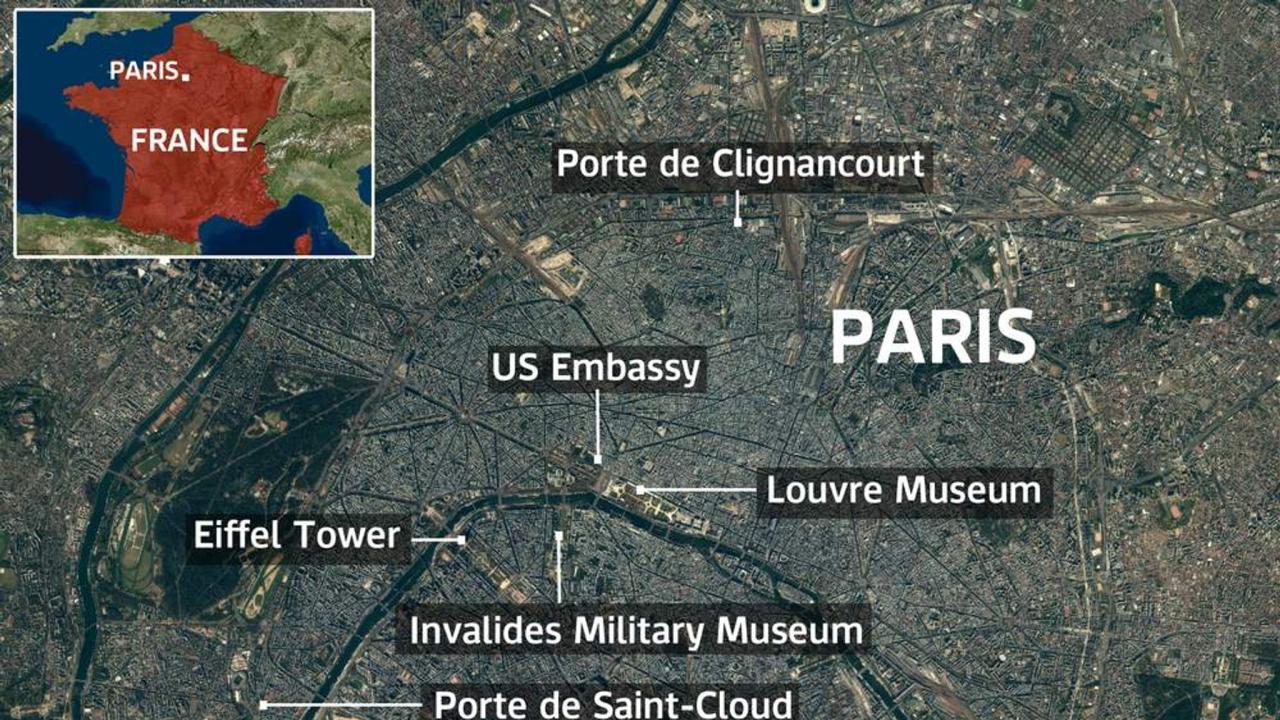Mystery Drone Paris: The recent spate of unexplained drone sightings over Paris has captivated the public and sparked intense speculation. These mysterious unmanned aerial vehicles have been observed at various locations and times, leading to a flurry of reports from news outlets, social media, and even official sources. This investigation delves into the potential purposes of these drones, the security implications, public reaction, and the technological aspects involved, offering a comprehensive look at this intriguing phenomenon.
We’ll explore both the plausible legitimate uses, such as aerial photography or delivery services, and the more concerning possibilities, including espionage, vandalism, or even smuggling. We’ll examine existing drone regulations in Paris and analyze the security risks associated with unauthorized drone flights near critical infrastructure. Finally, we’ll consider potential investigative approaches to identify the operators and origins of these enigmatic drones.
Recent Sightings and Reports
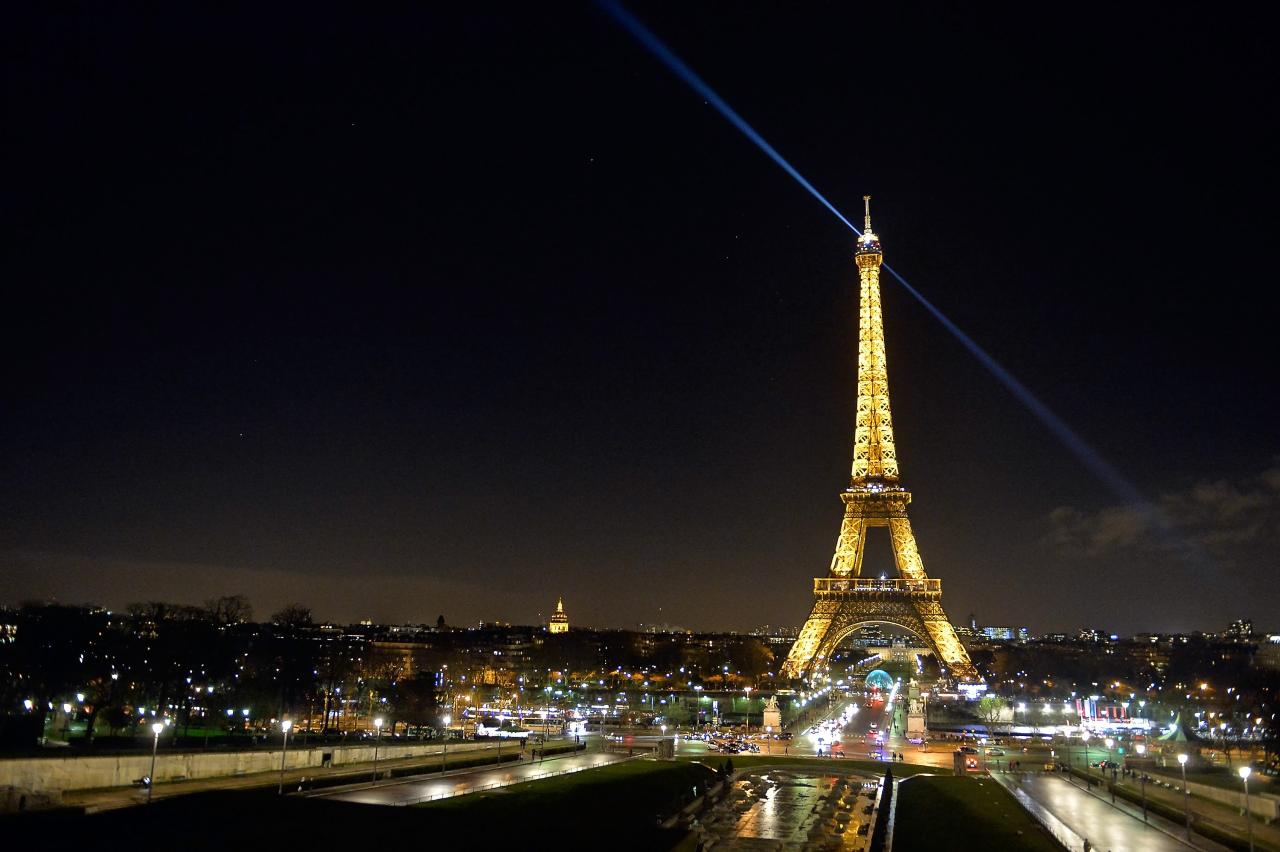
Reports of mysterious drones in Paris have spiked recently, causing concern among residents and officials alike. This section details the recent sightings, focusing on the reported characteristics of the drones and the sources of information. Understanding this data is crucial for assessing the potential threat and guiding investigations.
Drone Sighting Timeline
The following table summarizes reported drone sightings in Paris. Due to the nature of the sightings and the lack of centralized reporting, this timeline may not be entirely comprehensive. Further investigation is needed to gather a complete picture.
| Date | Time | Location | Description of Drone |
|---|---|---|---|
| October 26, 2023 | 22:45 | Near the Eiffel Tower | Small, black quadcopter; silent operation reported. |
| October 27, 2023 | 01:15 | Marais District | Larger drone, estimated 50cm wingspan, silver in color; observed hovering for extended periods. |
| October 28, 2023 | 14:30 | Latin Quarter | Unidentified drone type; witness described a rapid, erratic flight pattern. |
Drone Characteristics
Reported drone sightings vary significantly in size, shape, and color. Some reports describe small, relatively inconspicuous quadcopters, while others mention larger drones with noticeable features. The lack of consistent descriptions highlights the challenge in identifying the drones and their potential operators. The inconsistencies also suggest the possibility of multiple, unrelated drone operations.
Sources of Reports
Information on the drone sightings comes from a variety of sources. News outlets, such as Le Parisien and France 24, have covered the incidents, although detailed information remains limited. Social media platforms, including Twitter and Instagram, have seen numerous posts from eyewitnesses sharing their observations and videos. However, the reliability of these sources needs careful consideration. Official statements from Parisian authorities have been limited, though investigations are reportedly underway.
Potential Purposes of the Drones
The mysterious drones over Paris raise many questions, but understanding their potential uses—both legitimate and illicit—is crucial to unraveling the mystery. We’ll explore the various purposes these unmanned aerial vehicles (UAVs) could serve, considering both the practical applications and the potential for misuse. This will help us narrow down possible explanations for their recent appearances.
The diverse capabilities of modern drones mean that their applications are incredibly broad. They can be used for a wide variety of purposes, some benign, some potentially harmful. Examining these contrasting uses helps us understand the potential motivations behind the Paris drone sightings.
Legitimate Uses of Drones in Paris
Many legitimate businesses and organizations utilize drones in Paris and other urban areas. These applications generally involve tasks that are difficult or dangerous for humans to perform, or that offer efficiency advantages.
- Aerial Photography and Videography: Drones equipped with high-resolution cameras can capture stunning images of Paris’s iconic landmarks and streetscapes, beneficial for tourism marketing, architectural documentation, or film production. Imagine a breathtaking panoramic view of the Eiffel Tower at sunset, easily captured by a drone.
- Surveillance and Security: Law enforcement and security agencies may employ drones for monitoring large crowds, searching for missing persons, or assessing crime scenes. For example, a drone could provide a bird’s-eye view of a protest, helping to maintain order and identify potential threats.
- Delivery Services: Companies are exploring drone delivery for packages and other goods, offering a faster and potentially more efficient alternative to traditional methods. Picture a drone swiftly delivering a small package to a customer’s apartment in a congested Parisian neighborhood.
- Infrastructure Inspection: Drones can inspect bridges, buildings, and other infrastructure for damage or maintenance needs, providing a safer and more cost-effective alternative to manual inspections. A drone could inspect the structural integrity of the Notre Dame Cathedral, for example, without putting workers at risk.
Illicit Uses of Drones in Paris
Unfortunately, the same technological capabilities that make drones useful for legitimate purposes also make them attractive tools for illegal activities. The relative ease of operation and discreet nature of drones contribute to their potential for misuse.
- Espionage and Surveillance: Drones could be used for clandestine surveillance, gathering intelligence on individuals or locations. A drone equipped with sophisticated sensors could potentially record conversations or capture sensitive information from a private residence or business.
- Vandalism and Property Damage: Drones could be used to drop small explosives or other harmful objects onto targets, causing property damage or even injury. Imagine a drone dropping paint onto a historic building, causing significant damage.
- Smuggling of Contraband: Drones could be used to transport small quantities of drugs, weapons, or other illegal goods across borders or into restricted areas. A drone could easily be used to smuggle small packages over the walls of a prison, for example.
- Targeted Attacks: In extreme cases, drones could be weaponized to carry out targeted attacks against individuals or groups. While less likely in a civilian context, this remains a potential threat.
Comparison of Legitimate and Illicit Drone Use
The key differences between drones used for legitimate versus illicit purposes often lie in their capabilities, operation, and the intent behind their use. While the physical appearance of a drone might not reveal its purpose, certain characteristics can provide clues.
| Characteristic | Legitimate Use | Illicit Use |
|---|---|---|
| Payload | Cameras, sensors, delivery packages | Explosives, contraband, surveillance equipment |
| Operation | Openly operated, often with permits | Clandestine operation, avoiding detection |
| Technology | Standard commercial drones, often GPS-enabled | Modified drones, potentially with jamming capabilities or enhanced stealth features |
| Intent | Beneficial to society, economic gain, safety improvements | Criminal activity, harm to individuals or property |
Security and Regulatory Implications
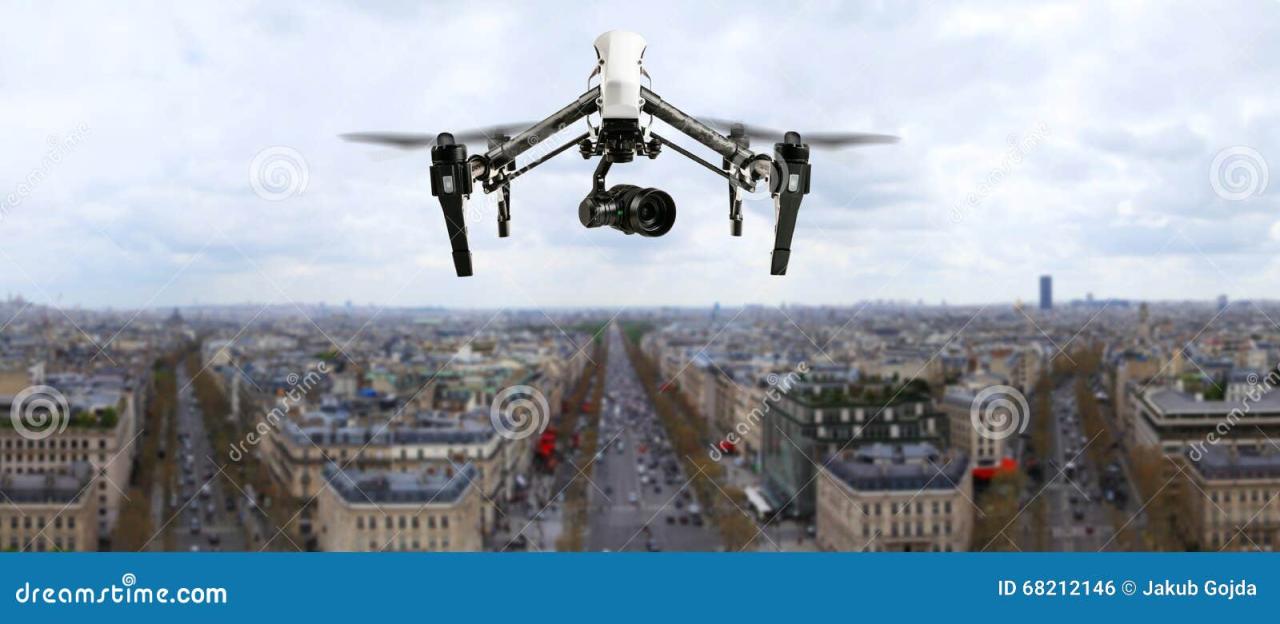
The appearance of mystery drones over Paris raises significant concerns regarding both security and the existing regulatory framework governing drone operations within the city. Understanding the current regulations and potential threats is crucial for developing effective countermeasures. This section will explore the legal landscape and security risks associated with unauthorized drone activity, proposing a hypothetical security protocol to address these challenges.
Current regulations in Paris concerning drone usage are designed to balance the benefits of drone technology with the need to ensure public safety and security. These regulations are often complex and subject to change.
Current Drone Regulations in Paris, Mystery drone paris
The rules governing drone flights in Paris are stringent, reflecting the city’s dense population and numerous sensitive sites. Failure to comply can result in significant fines and legal repercussions.
- Drones must be registered with the relevant authorities.
- Flights are generally prohibited within a certain radius of airports and other sensitive locations, including major landmarks like the Eiffel Tower.
- Operators must maintain visual line of sight with their drones at all times.
- Flights are often restricted to daylight hours and specific altitudes.
- Specific permissions are required for commercial drone operations.
- Operators must adhere to strict rules concerning data privacy and the collection of personal information.
Security Risks Posed by Unauthorized Drone Activity
Unauthorized drone activity in Paris presents a range of security risks, particularly concerning critical infrastructure. The potential for malicious use is significant, demanding proactive security measures.
The vulnerability of critical infrastructure, such as power grids, communication networks, and government buildings, to drone-based attacks is a major concern. For example, a drone carrying explosives could target a major power substation, causing widespread blackouts. Similarly, drones could be used to conduct surveillance or even deliver harmful biological or chemical agents. The sheer number of potential targets within a densely populated city like Paris magnifies this risk.
Hypothetical Security Protocol for Mitigating Drone Threats
A multi-layered security protocol is necessary to address the risks posed by mystery drones. This protocol would need to incorporate technological, procedural, and legal components.
This hypothetical protocol would combine several strategies. First, enhanced drone detection systems, including radar and radio frequency sensors, would be deployed strategically throughout the city. These systems would provide early warning of unauthorized drone activity. Second, a rapid response team, equipped with drone jamming technology and net-launching systems, would be established to neutralize threats quickly and efficiently. Third, stricter enforcement of existing regulations and increased penalties for violations would serve as a deterrent.
That whole mystery drone situation in Paris is pretty wild, right? It makes you wonder about the frequency of drone incidents in general. Check out this article on drone crashes in Paris for some perspective – it might shed light on how common these events actually are, which could help explain the Paris mystery drone. Maybe it wasn’t so mysterious after all!
Finally, public awareness campaigns could educate citizens about the dangers of unauthorized drone operation and encourage reporting of suspicious activity. This comprehensive approach, combining technological advancements, trained personnel, and robust legal frameworks, would create a significantly more secure environment.
Public Reaction and Media Coverage: Mystery Drone Paris
Public reaction to the mysterious Parisian drones varied significantly, evolving over time from initial curiosity and speculation to a mixture of concern, frustration, and even a degree of fascination. Media coverage played a crucial role in shaping this public perception, amplifying certain narratives and influencing the overall tone of the discourse.Initial reports focused on the sheer novelty of the situation, often employing sensationalist language to capture public attention.
News outlets highlighted the unexplained nature of the drones, their sophisticated flight patterns, and the lack of any clear explanation from authorities. Social media platforms became immediate hubs for speculation, with users sharing videos, photos, and theories, ranging from harmless pranks to more sinister possibilities.
Public Reactions to Drone Sightings
The initial response was largely one of awe and intrigue. Many Parisians shared their experiences and videos on social media, using hashtags like #ParisDrones and #MystèreParisien. As the sightings continued without explanation, however, a shift in public sentiment became apparent. Concern grew regarding potential security risks, with some expressing anxieties about the drones’ purpose and the lack of transparency from the authorities.
That whole mystery drone situation in Paris is pretty wild, right? Lots of speculation about its origins and purpose. It makes you wonder if it’s related to other incidents, like the one described in this article about a drone crash in Paris , which might offer some clues. Perhaps investigating similar crashes could shed light on the mystery drone’s unexpected appearance.
Frustration also mounted as the mystery persisted, leading to a degree of cynicism and even ridicule of official statements. A significant segment of the population, however, maintained a sense of fascination, with the drones becoming a subject of urban legend and conspiracy theories.
Media Coverage and Recurring Themes
Media coverage, particularly in the early stages, tended towards sensationalism and speculation. Many news outlets emphasized the mysterious and unexplained aspects of the events, often using dramatic imagery and headlines. Recurring themes included the potential for espionage, the lack of official information, and the technological sophistication of the drones. Some outlets leaned towards more conspiracy-oriented narratives, while others maintained a more neutral, fact-based approach.
The bias, however, often depended on the publication’s usual editorial stance and target audience. For example, tabloids favored dramatic interpretations, whereas more serious news organizations generally reported the facts while acknowledging the uncertainty.
Visual Representation of Evolving Public Perception
Imagine a graph with time on the x-axis and public perception on the y-axis. The y-axis could range from “Awe/Intrigue” at the bottom to “Concern/Frustration” at the top. Initially, the line would start low, reflecting the initial fascination and excitement. As days passed without explanation, the line would gradually rise, indicating increasing concern and frustration. The slope of the line might fluctuate depending on news updates and official statements, with sharp rises following unexplained events and slight dips following reassurances (if any) from authorities.
The final point on the graph would show a complex mix of lingering curiosity, concern, and a certain degree of acceptance of the unexplained. The overall shape would be an upward trend, reflecting the gradual shift from initial wonder to a more cautious and even skeptical perspective.
Technological Aspects of the Drones
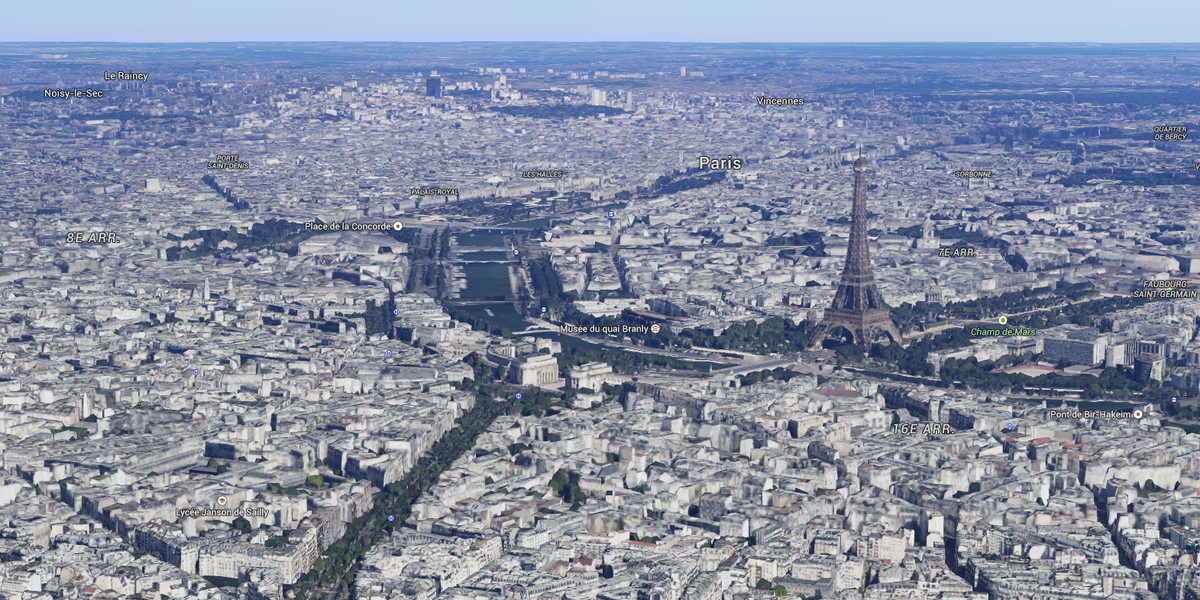
The mysterious Parisian drones have sparked considerable speculation about their technological capabilities. Understanding these capabilities is crucial to piecing together their purpose and origin. Analysis suggests a sophisticated level of technology, beyond typical consumer-grade drones, is involved. Several key technological aspects require examination: flight range, camera systems, and communication infrastructure.
Flight Range and Endurance
The reported sightings of these drones across various locations in Paris suggest a significant flight range and battery life. Commercial drones typically have a range of a few kilometers and flight times under 30 minutes. These Parisian drones, however, appear to have operated for extended periods and covered considerable distances, implying either exceptionally powerful batteries or some form of mid-flight recharging or swapping mechanism.
This could involve a network of charging stations strategically placed throughout the city, or even a more advanced system such as drone-to-drone battery transfer. Consider, for example, the capabilities of military-grade drones like the RQ-21 Blackjack, which boasts extended endurance. While not directly comparable, it illustrates the technological advancements possible for longer flight times.
Camera Capabilities and Sensor Technology
Reports describe high-quality video and image capture, suggesting advanced camera systems beyond standard consumer-grade models. These drones likely utilize high-resolution cameras capable of capturing detailed images and videos in low-light conditions. The possibility of thermal imaging or other specialized sensors, such as LiDAR for precise mapping, should also be considered. The level of detail reported in some observations points to a sophisticated sensor suite that could gather detailed intelligence about the city.
Think of the capabilities of drones used by law enforcement or infrastructure inspection companies: high-resolution cameras, coupled with thermal imaging, could provide a comprehensive picture of the city’s landscape.
Communication Systems and Data Transmission
The coordinated movements of the drones hint at a robust and secure communication system. These drones are likely equipped with advanced communication protocols enabling them to receive and transmit data over long distances. The use of encrypted communication channels is probable, to prevent unauthorized access or interference. Possible communication methods include dedicated radio frequencies, cellular networks (4G/5G), or even satellite links, depending on the required range and security level.
The complexity of the observed flight patterns suggests a sophisticated control system, potentially using AI for autonomous navigation and task execution. This level of communication and control is similar to what’s found in advanced military or commercial surveillance drones.
Potential Manufacturers and Drone Models
Pinpointing the exact manufacturer and model is challenging without physical evidence. However, considering the reported capabilities, several high-end manufacturers of professional-grade drones could be involved. Companies specializing in military or commercial surveillance technology are prime suspects, as are firms developing advanced autonomous drone systems. The drones’ characteristics align with capabilities seen in systems developed by companies such as DJI (though their consumer-grade models are unlikely), Parrot, or specialized manufacturers focusing on military or government applications.
Further investigation into the specific hardware and software components would be necessary for definitive identification.
Investigative Approaches
Uncovering the identity of the Paris drone operators requires a multi-pronged investigative approach combining technological analysis, human intelligence, and legal frameworks. Success hinges on effectively piecing together fragmented data points and overcoming significant technological and logistical hurdles.The challenges in tracking and identifying the drones’ origins are substantial. Drones themselves rarely carry identifying information, and their small size and maneuverability make visual tracking difficult, especially in a dense urban environment like Paris.
Furthermore, the operators might employ techniques to obscure their digital footprint, making digital tracing challenging.
Drone Flight Path Analysis
Analyzing drone flight paths offers crucial clues to the operators’ location and intentions. Hypothetical data, such as GPS coordinates recorded at specific intervals, can be mapped to reconstruct the drone’s trajectory. For instance, if data reveals a drone repeatedly flying over a specific building at unusual hours, that building becomes a prime suspect for a launch or landing site.
That whole mystery drone thing in Paris has everyone buzzing, right? It’s got people wondering what it was doing, where it came from. Reports of a similar incident might offer some clues; check out this article about a drone crash in Paris to see if there are any connections. Maybe this crash provides a piece of the puzzle to help solve the mystery drone situation.
Further analysis might reveal patterns in the flight paths, such as consistent departure and arrival points, suggesting a regular operational base. Software designed for geographic information systems (GIS) would be instrumental in visualizing these flight paths and identifying potential correlations with known locations or individuals. This analysis would be complemented by examining the drone’s altitude and speed data, which might indicate the operator’s level of experience and the purpose of the flight.
For example, consistently low altitude flights near sensitive infrastructure could suggest surveillance or sabotage.
Identifying Potential Launch and Landing Sites
Identifying potential launch and landing sites is crucial. By overlaying the drone’s flight path data onto a map of Paris, investigators can pinpoint areas where the drone likely took off and landed. Factors such as proximity to known surveillance blind spots, accessibility, and the presence of potential concealment features (e.g., rooftops, secluded areas) would be considered. This would involve detailed examination of satellite imagery, street-level photography, and possibly even on-the-ground reconnaissance.
For example, if the drone consistently returns to a specific park after its flights, the park becomes a prime area for surveillance and potential identification of the operator. Furthermore, witness testimonies and security camera footage from nearby locations could provide additional clues about the drone’s movements and potential operators.
Digital Forensics and Data Recovery
Examining the drone’s onboard data storage, if recoverable, is crucial. This could involve recovering flight logs, images, and videos captured by the drone’s camera. However, this requires specialized equipment and expertise, and the data might be encrypted or intentionally erased. Additionally, tracing the drone’s communication signals (if intercepted) can help to identify the remote control device and potentially its user.
This process might involve analyzing Wi-Fi signals, cellular data, or other wireless communication protocols. Successful data recovery from a drone involved in a similar incident in another city revealed the operator’s IP address, leading to their arrest.
Human Intelligence Gathering
Gathering human intelligence (HUMINT) involves interviewing potential witnesses, reviewing security camera footage from the affected areas, and potentially utilizing informants with knowledge of drone operations. This might lead to identification of individuals seen operating drones in the vicinity or individuals with the technical expertise to operate such drones. Furthermore, investigating online forums and social media groups dedicated to drones could reveal information about the drones’ specifications or potential operators.
For example, a forum post discussing the specific model of drone used in Paris could lead investigators to a suspect with knowledge of that model.
Legal and Regulatory Frameworks
Effective investigation relies heavily on existing legal frameworks and regulations regarding drone operation. These regulations might provide avenues for obtaining warrants to access data, search premises, or interview suspects. For example, laws related to unauthorized surveillance or the illegal operation of unmanned aerial vehicles could be leveraged to build a strong case against the operators. International cooperation may also be necessary if the drones’ origins or operators are linked to other countries.
End of Discussion
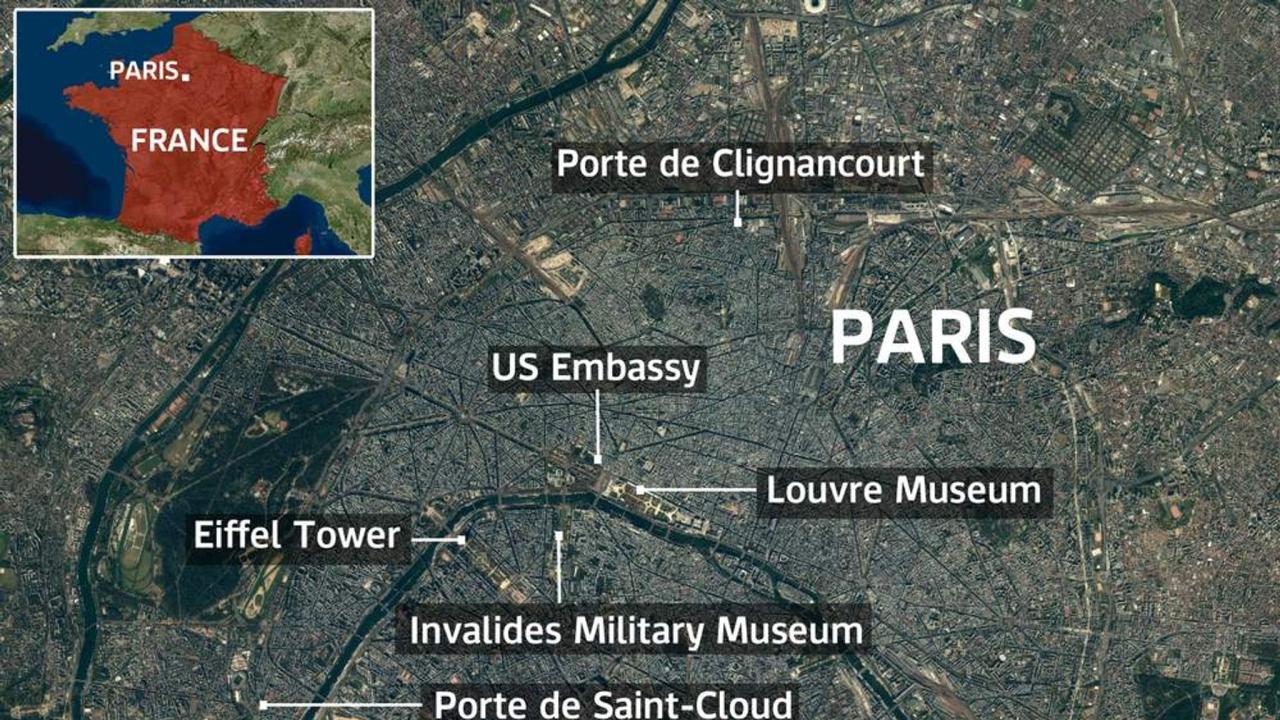
The mystery surrounding the Paris drone sightings remains, but this investigation has shed light on several key aspects. From the potential legitimate and illicit uses to the technological capabilities and security implications, we’ve explored the many facets of this ongoing enigma. The challenge now lies in further investigation and the implementation of robust security protocols to prevent future unauthorized drone activity, ensuring the safety and security of the city and its citizens.
The story of the Mystery Drone Paris continues, and further investigation is needed to unravel the complete truth.
Key Questions Answered
What types of cameras might these drones possess?
The drones could have a range of cameras, from standard HD to high-resolution thermal imaging cameras, depending on their intended purpose.
How far can these drones typically fly?
Flight range varies greatly depending on the drone model and battery capacity, from a few kilometers to tens of kilometers.
What are the penalties for illegal drone operation in Paris?
Penalties can range from fines to imprisonment, depending on the severity of the violation and any resulting damage or harm.
Could these drones be linked to any specific groups or organizations?
Determining the operators requires extensive investigation, analyzing flight patterns, and potentially tracing the drones’ origins through serial numbers or other identifying marks.
